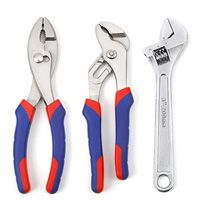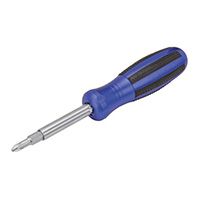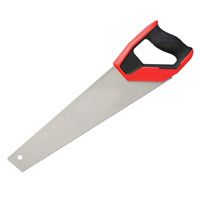
Watch as Ask This Old House expert Richard Trethewey shows you how to install a garbage disposal in your kitchen.
by Richard Trethewey Updated 08/07/2024Garbage disposals reduce kitchen waste and can prevent plumbing issues caused by food debris. With the right tools and knowledge, you can tackle installing one yourself. In the video above, Ask This Old House plumbing and heating expert Richard Trethewey demonstrates the step-by-step process of installing a garbage disposal in a kitchen sink.
Garbage disposals grind food waste into small particles that can easily flow through your plumbing system. They offer several benefits to homeowners, including:
A typical garbage disposal has these components:
To install a garbage disposal, you’ll need the following tools and materials:



Take these steps before beginning the installation:
Follow these steps to install your new garbage disposal:
One of the trickier aspects of installing a garbage disposal is connecting it to your existing plumbing. Trethewey recommends using repair couplings to help navigate small, tight spaces. When sizing plumbing, he advises checking whether your pipes are measured by their inside diameter (ID) or outside diameter (OD).
Most garbage disposals require a dedicated electrical circuit. If you don’t have an existing outlet under your sink, we recommend hiring a licensed electrician to install one. Some key points to remember:
Now it’s time to test your new garbage disposal:
If you encounter any issues, such as leaks or strange sounds, double-check all your connections and make sure everything’s tightened properly.
To keep your new garbage disposal running smoothly, follow these best practices:
Trethewey suggests installing a clean-out plug if possible. You can remove this plug when needed to make cleaning and maintenance easier. Make sure you buy one that can withstand the water pressure in the system.
Understanding the different types of garbage disposals can help you choose the right one for your home. The two main types of garbage disposals are continuous feed and batch feed. Here’s how they stack up:
| Type | Description | Pros | Cons |
|---|---|---|---|
| Continuous Feed | The most common types found in homes are continuous feed systems. They run with a wall switch and can handle a continuous stream of food waste. To use it, turn on the cold water, flip the switch, and feed food waste into the disposal. | • Easy to use with a wall switch • Can handle large amounts of food waste • Generally more affordable | • Requires attention to avoid overloading • Slightly higher risk of objects falling in • Needs a power switch, which some find less user-friendly |
| Batch Feed | Batch feed disposals require a stopper or cover to activate the unit. You load the chamber with food waste, insert the stopper, and then the disposal grinds up the waste. These units are generally safer because they only run when the stopper is in place. | • Safer operation with stopper-activated mechanism • Less risk of objects falling in • Generally quieter | • Batch operation process can be slower • Typically more expensive • May require more space under the sink |
You can find the other tools and materials he used to install the disposa at home centers and plumbing supply houses.